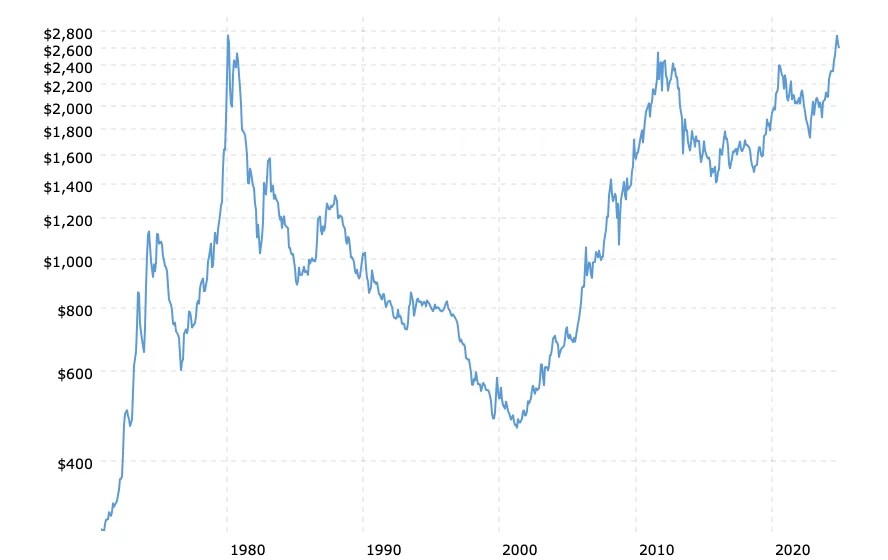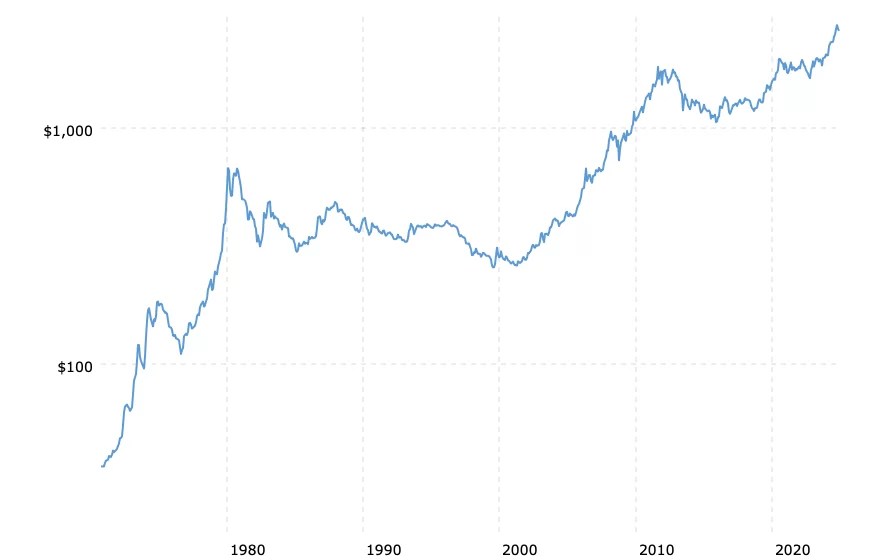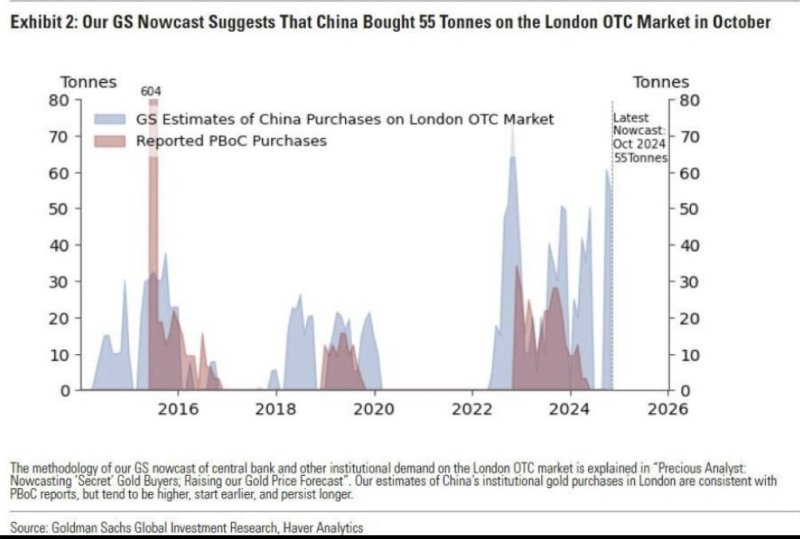The intra-day high for spot gold in 2024 is $2785 oz. That is an increase of 34% over its closing price of $2062 oz at the end of 2023. Indeed, gold holders are happy campers and their confidence and trust is emboldened and confirmed.
As the gold price continued to climb throughout the year, the financial media, particularly in the gold space, has treated us to a barrage of headlines regarding “new, all-time highs” for the yellow metal.
In truth, the all-time high for the gold price was set in 1980; and, it has never exceeded that price point since 1980.
Below is chart (source) of the gold price from 1970 to 2024…
Gold Price 1970-2024
The chart above shows the long-term appreciation of the gold price beginning at approximately $35 oz. in 1970 and ending at the recent average closing price of $2746 oz. in October 2024. Looking at the slope of the uptrend, it is apparent that we can argue “new, all-time highs for gold” intermittently over the years and be factually correct.
It is important to point out, however, that there are significant declines in the gold price over long periods of time. Most notable is the period from 1980 to 1999. Even after the price began moving up, it was several more years before the old high was eclipsed. The next peak for gold finally came in 2011, thirty-one years after the 1980 peak.
Now, here is a second chart for the same time period except that the prices have been adjusted for the effects of inflation…
Gold Price (inflation-adjusted) 1970-2024

Two things in particular stand out on the chart immediately above: 1) The ascending uptrend shown in the first chart is now visibly altered in a negative way; and, 2) THERE HAVE BEEN NO NEW (REAL) HIGHS IN THE GOLD PRICE SINCE 1980.
When the gold price peaked in 1980, it reflected several decades of U.S. dollar depreciation. At a monthly average closing price of $677 oz., the gold price correlated to a 97% loss in U.S. dollar purchasing power.
Subsequently, when the gold price peaked in 2011, more than thirty years later, the monthly average closing price was $1825 oz., which represented a nearly 99% loss in U.S. dollar purchasing power. All of the nominal price increase from $677 (1980) to $1825 accounted for the effects of inflation that had occurred between 1980 and 2011.
By 2020, with the gold price having risen to a new peak closer to $2000 oz., a full 99% loss of U.S. dollar purchasing power was confirmed. The additional increase in the gold price between 2011 and 2020 is reflective of the additional loss of U.S. dollar purchasing power that occurred between 2011 and 2020.
Gold’s price increase this year, after breaking the $2000 peak first reached in 2020, accounts for the loss of U.S. dollar purchasing power that has occurred since 2020.
PRICE TABLES
Below are two tables with the actual, nominal prices shown on the charts above; and, in parentheses, their correlative inflation-adjusted prices in current dollars. The second table uses intraday highs, rather than monthly average closing prices, for those who are interested.
Table No. 1 (monthly average closing prices)
JANUARY 1980 $ 677 ($2749)
AUGUST 2011 $1825 ($2542)
JULY 2020 $1971 ($2401)
The average monthly closing prices for August 2011 and July 2020 were each cheaper in succession than the previous price peak. The October 2024 price peak of $2746 broke the pattern of successively lower price peaks for gold; however, the October 2024 price of $2746 oz. is still less than the inflation-adjusted peak of $2749 oz. in January 1980.
Table No. 2 (intraday highs)
JANUARY 1980 $ 843 ($3407)
AUGUST 2011 $1896 ($2635)
JULY 2020 $2058 ($2510)
When comparing intraday highs, the latest gold price peak of $2785 is far cheaper than its 1980 ($3407) inflation-adjusted price.
CONCLUSION
A rising price for gold does not mean that the value of gold is increasing. Gold’s value is in its use as money. That value remains the same as it was centuries ago. Further, the price of gold tells us nothing about gold. The higher price of gold over time is a reflection of the loss of purchasing power in the U.S. dollar; nothing more.
A higher gold price in recognition of the U.S. dollar’s loss of purchasing power comes after the fact. The price peaks of 1980, 2011, 2020 were not exceeded until further significant loss of purchasing power had occurred; and, in belated fashion after several years.
Even though the nominal dollar price of gold has quadrupled since January 1980, its recent peak price is still cheaper than its 1980 inflation-adjusted price.
Any lasting, significant increases above the current gold price are unlikely in the near term unless there is a sudden and rapid acceleration of the dollar’s decline in purchasing power.
Kelsey Williams is the author of two books: INFLATION, WHAT IT IS, WHAT IT ISN’T, AND WHO’S RESPONSIBLE FOR IT and ALL HAIL THE FED
Read the full article here












Leave a Reply